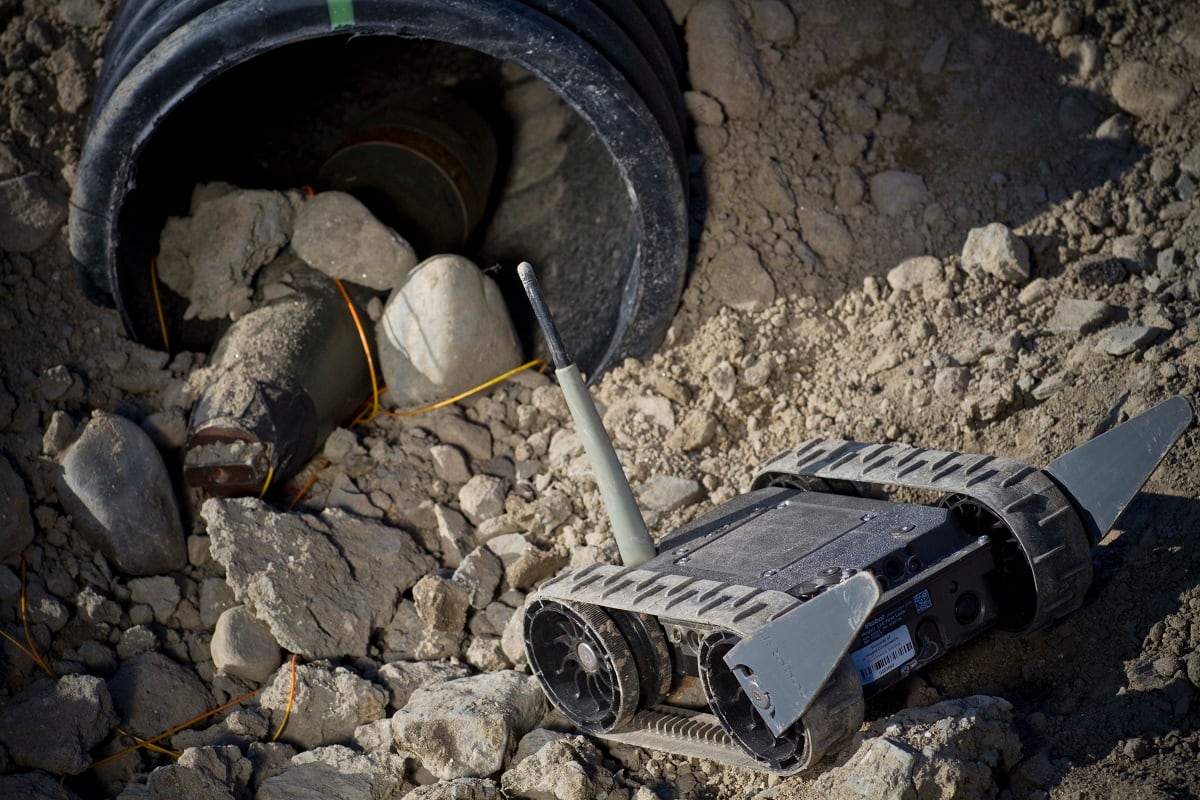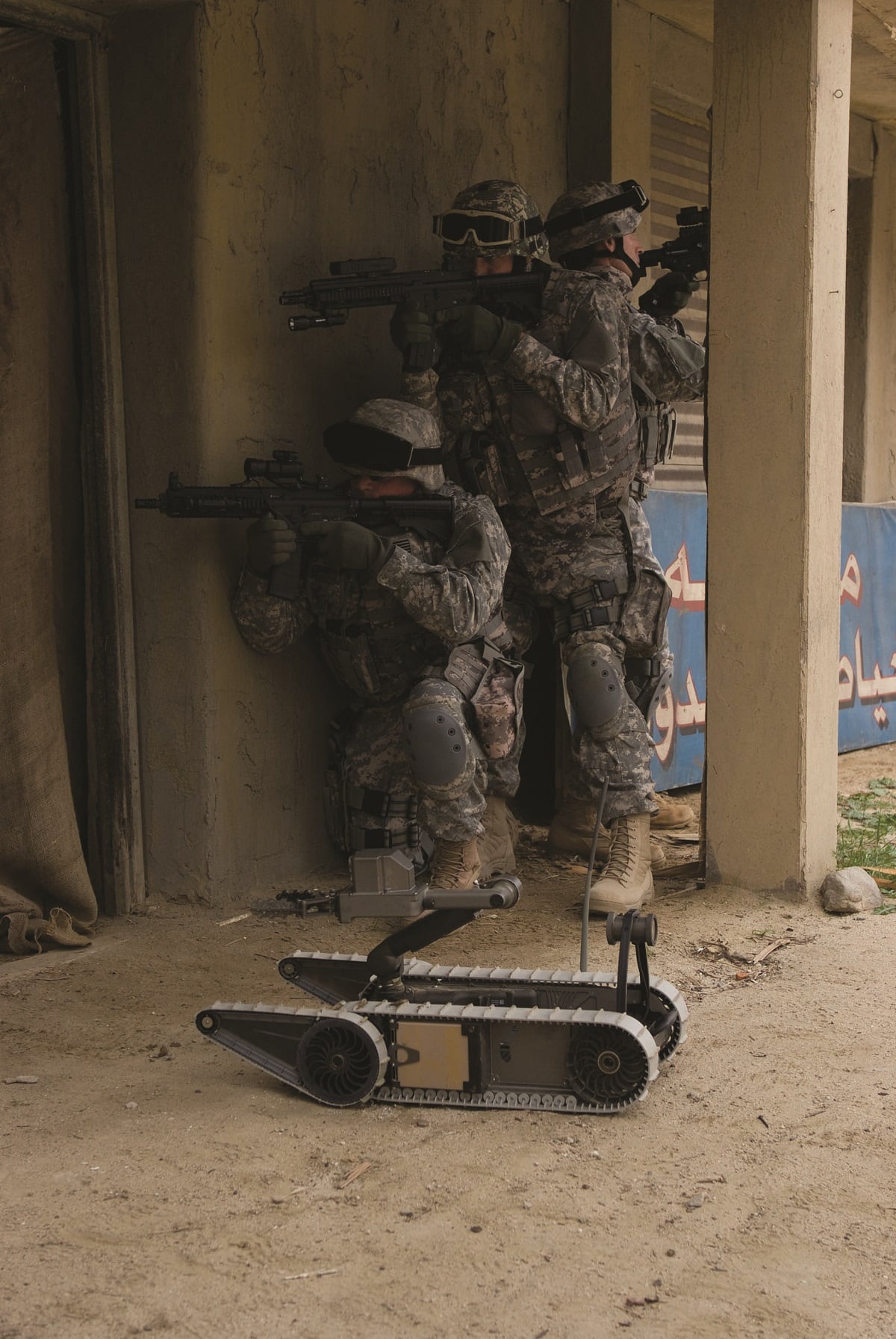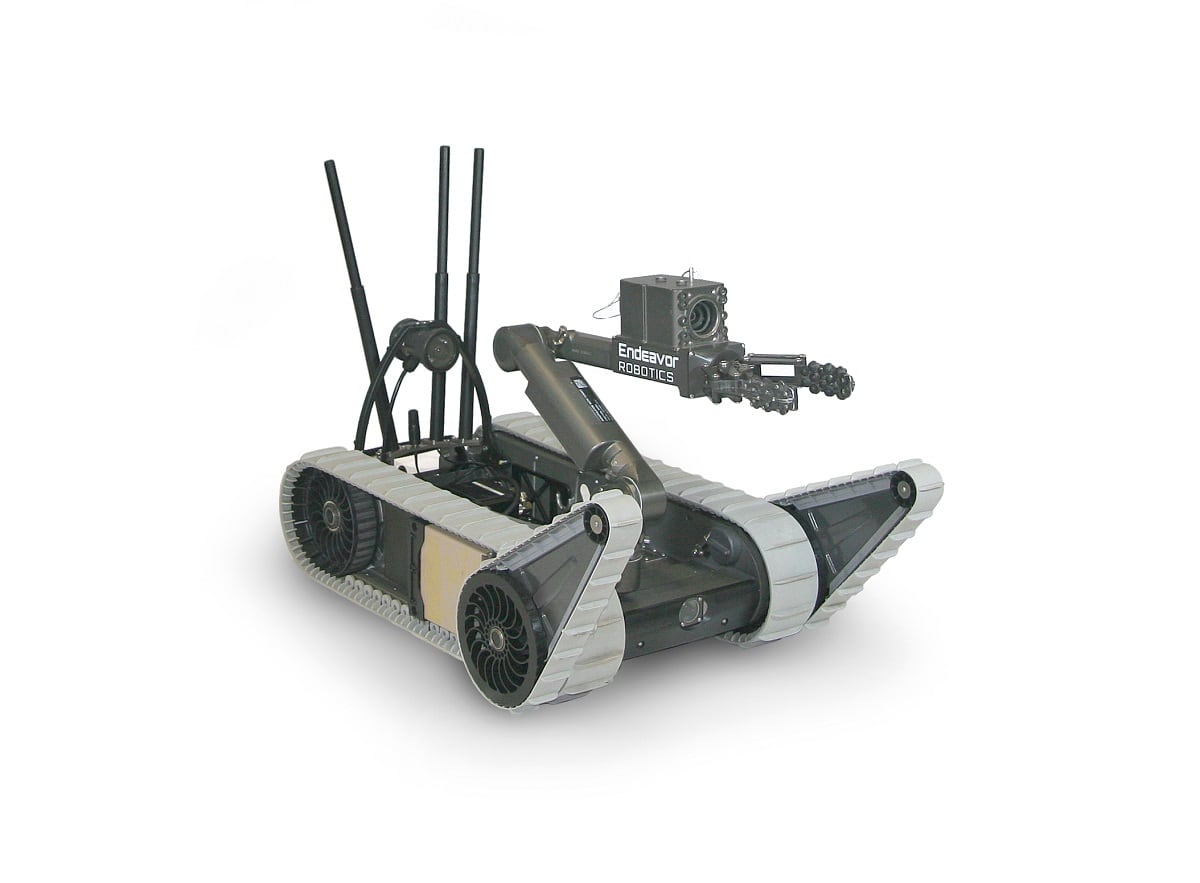A new Marine Corps purchase will help explosive ordnance disposal technicians gain access to smaller or out-of-reach areas.
Marines now have a “throwable” robot built to be slung, flung or dropped in just about any terrain or conditions.
The Corps has contracted with Endeavor Robotics for $10 million to buy an undisclosed number of FirstLook robots, a 5.2 pound, 10-by-9-inch “throwable,” ruggedized robot that can right itself and move in a variety of rough spaces, according to a company release.
The size of the robot, and its day/night camera and two-way audio, gives operators “greater stand-off distance” from threats, according to a company release.

Rick Daley, team leader for the Marine Corps Systems Command’s explosive ordnance disposal team, walked through this and another recent purchase that puts smaller robots in small units.
The FirstLook robot is termed the Ultra-Light Robot or Small Unmanned Ground Vehicle SUGV-110, by the Corps, Daley said. It’s a commercial off-the-shelf option for EOD technicians to “safely locate, interrogate, isolate, and/or render” improvised explosive devices, unexploded ordnance and home-made explosives.”

“It provides a lightweight, throwable reconnaissance asset to EOD technicians,” Daley wrote in an email.
Nearly 200 of the throwable robots were purchased recently, he said. Testing is scheduled for this fall with fielding to follow soon afterward.
This isn’t the first lightweight robot that an individual Marine can carry in an EOD team. Marines began acquiring the larger mini robot SUGV-310, that fits in a rucksack and weighs 18.5 pounds is 9.1 inches tall, 14.3 inches wide and 24 inches long when in the stowed position.

Basically, the size of a carry-on bag that someone might take on an airplane.
Those slightly larger robots have been in use since fiscal year 2014, and the Corps has kept buying them in batches since then with more planned for next year, Daley wrote.
In total, 264 have either been purchased or are planned for purchase. So far, 130 have been field to units with the I, II and III Marine Expeditionary Forces, Daley wrote.
EOD techs also use the mini robot to investigate and handle several types of threats. But it serves another function as part of the Route Resonance and Clearance Increment II Modular Set Integration Kit.

Both robots do more than investigate and interact with explosives or potential threats. They can each serve as repeaters through their “meshing capability,” in which they use other robots to extend their operational range. Users can use one controller to maneuver or manipulate multiple robots, Daley said.
In a March press release, Endeavor Chief Executive Officer Sean Bielat noted the company’s efforts to “broadly field advanced” robots such as the SUGVs.
“Every one of our rugged, combat-tested robots places one more Marine, one more squad of Marines, in a safe position to deal with battlefield threats,” Bielat said in the release.
Todd South has written about crime, courts, government and the military for multiple publications since 2004 and was named a 2014 Pulitzer finalist for a co-written project on witness intimidation. Todd is a Marine veteran of the Iraq War.





